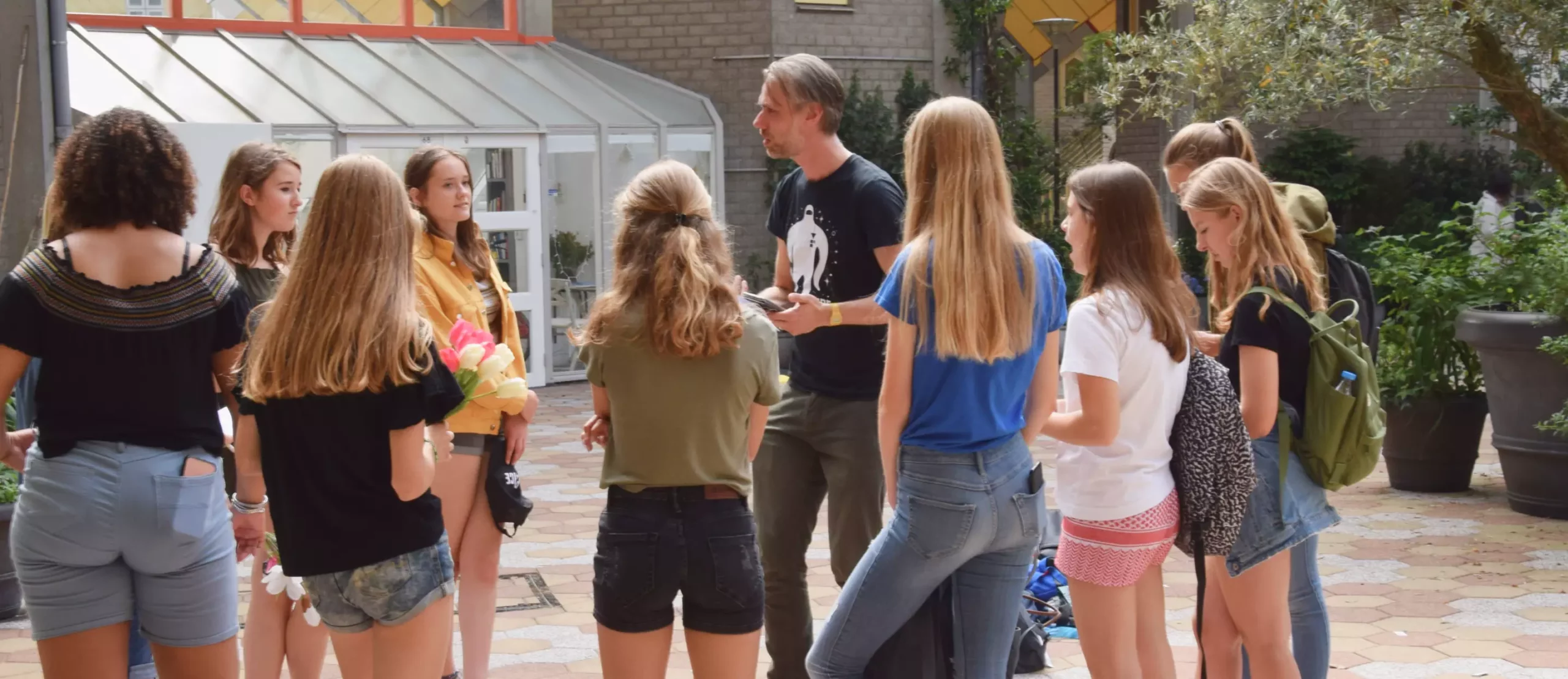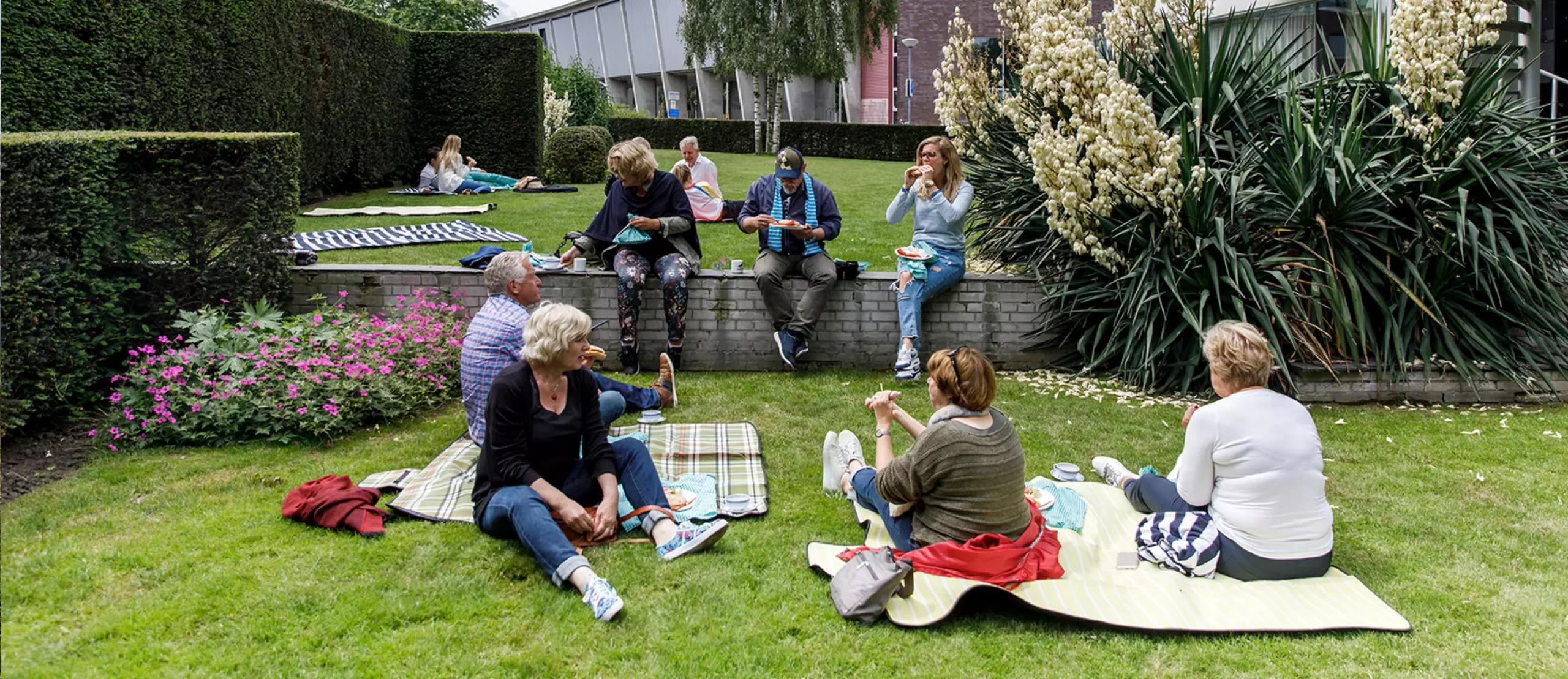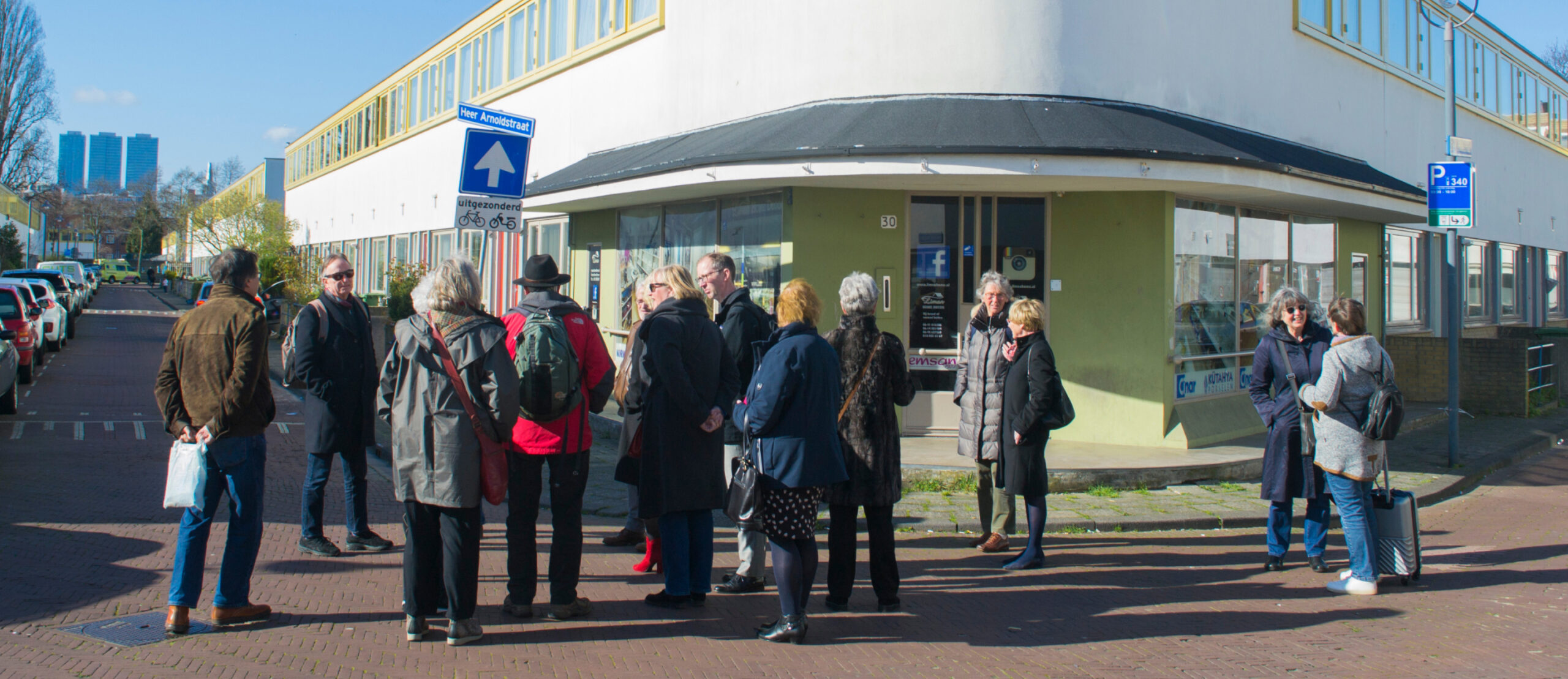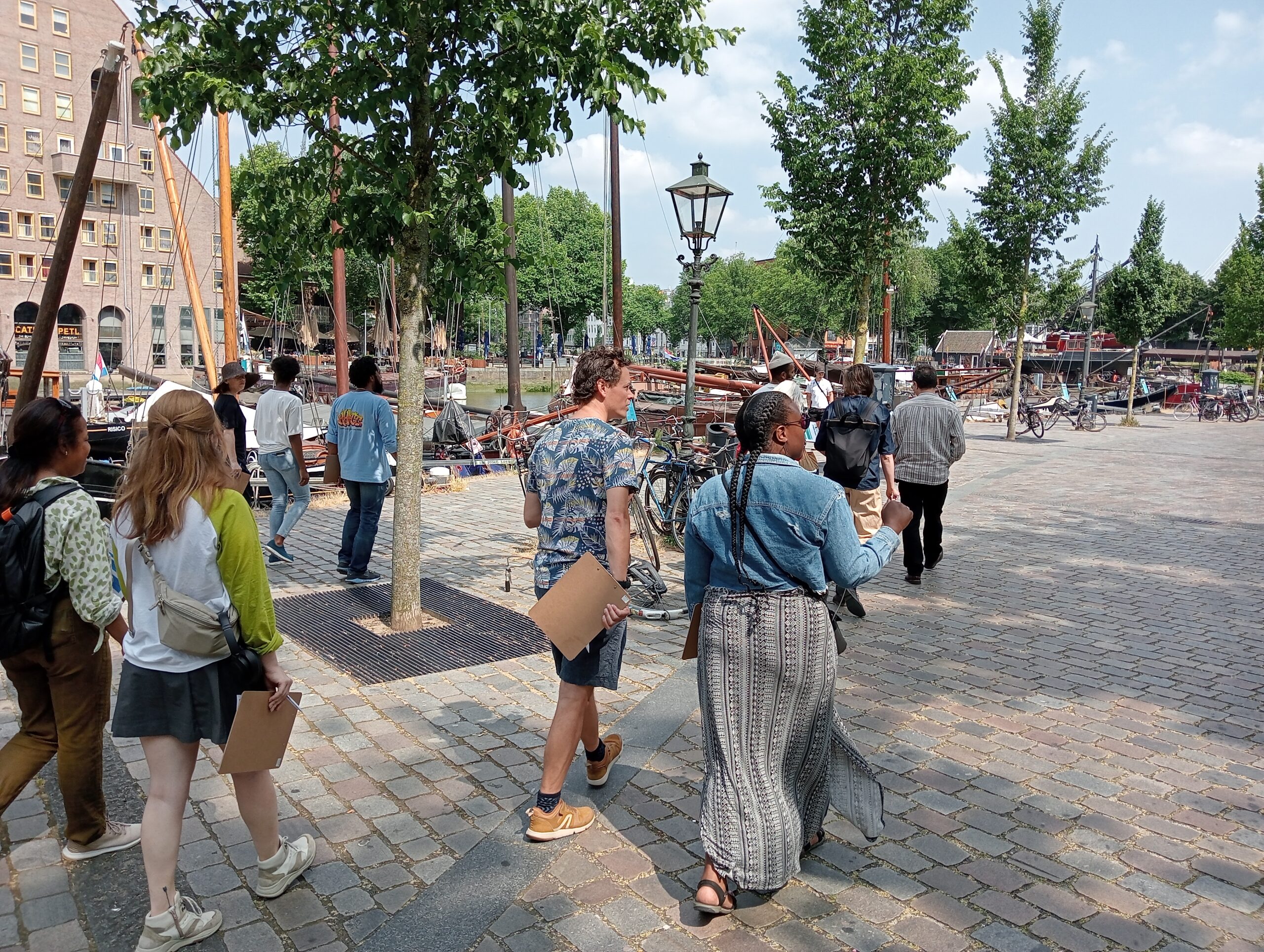tours-image-block-one-column-2-en
Inleidende paragraaf
Lorem ipsum dolor sit amet id erat aliquet diam ullamcorper tempus massa eleifend vivamus.
Lorem ipsum dolor sit amet id erat aliquet diam ullamcorper tempus massa eleifend vivamus.

How can we use our own energy as efficiently as possible, together with natural power? Travel to the future with us, where the neighborhood once again runs on human power. During this journey we also look to the past, which principles from over a century ago were in fact already sustainable and can be used again?
The neighborhood was built between 1910 and 1935 for workers of the rapidly growing port. In this period of renewal and progress, it was thought that healthy, happy people were more productive. Improving the living conditions of the harbor workers and their families was therefore central in the design of the neighborhood. These concerns resulted in an outdoor space with various squares and wide pedestrian streets, as well as several communal facilities such as the green courtyard gardens, the bathhouse, and the launderette. The pace in the neighborhood was slower than today, all facilities were within walking distance and there was no heavy car traffic yet. Experiments were also carried out within the housing blocks and dwellings to improve the quality of life. For example, houses were laid out efficiently and gradually connected to the gas and electricity networks.
In climate-neutral BoTu, sustainable principles regarding living and life from over a century ago are combined with the most modern techniques. In this future, the combination of manpower together with biomass, wind and solar energy will result in the neighborhood with the lowest energy bill in the Netherlands. A large part of the houses can even be disconnected from the gas and electricity networks!
The House of the Future and UrbanGuides will take you through Bospolder-Tussendijken, to see not only the neighborhood with new eyes, but also the global task of energy transition.
BoTu: Neighborhood on Human Power was created in close collaboration with Huis van de Toekomst, more info on Huis van de Toekomst, see www.huisvandetoekomst.org
Photo by Melle Smets – Huis van de Toekomst
Type
Prijs/Duur
Start Locatie
Boek nu
Lorem ipsum dolor sit amet id erat aliquet diam ullamcorper tempus massa eleifend vivamus.


The Museumpark has always been an interesting case in offering a diversity of cultural institutions in exceptional architectural buildings. Ranging from The Natural History Museum, which is housed in the old villa Dijkzicht to Museum Boijmans van Beuningen’s international art collection in its pre-war museum building. The national archive for architecture, and the 3300m2 exhibition space, the Kunsthal by Rem Koolhaas. A modern villa park borders the museum park, with a hypermodern house museum from the 1930s, a rosarium, a sculpture garden and an event terrain.
Type
Prijs/Duur
Start Locatie
Boek nu

The Kiefhoek is the undisputed highlight of modernism within the context of Rotterdam’s vast collection of social housing projects. It was with this residential area from 1927 that J. J. P. Oud made a name for himself as a modern architect. Oud created a standardized floor plan for the 294 houses that were supposed to be built in Rotterdam-South so that the project would come along rather quickly and, even more important, inexpensive.
The houses were small, but very practically furnished with all kinds of built-in elements, such as cupboards, a small fireplace and a useful coat rack that was, at the same time, serving the purpose of a hat shelf. Oud also made a matching design for several of the neighbourhood’s central facilities, like the two eye-catching shops, a boiler house and a church.
A tour of the Kiefhoek starts at the unique house museum, which gives you a good insight into the history of the architecture and its clever features. The house is set on the edge of the Hendrik Ido square and is only open to groups guided by an Urban- or MuseumGuide. After visiting the house museum, you’ll be exploring the rest of the remarkable project. Along the way, a professional guide will tell you all about this revolutionary urban development project by architect Oud.
Type
Prijs/Duur
Start Locatie
Boek nu

It is important to be aware of Rotterdam’s colonial past and its impact on the present. Increasing knowledge and awareness of this history creates a better understanding of this super-diverse city with many bicultural residents. The Open Monument Day in 2021 invited us to make this history visible through guided tours.
Together with a knowledgeable and engaging guide, you will visit various sites that are linked to the city’s colonial past. Some historic buildings are still intact, such as the former V.O.C. warehouse in Delfshaven. But there are also locations where this history has been made visible in recent years, such as on the Lloydpier with the Slavery Monument. Besides sharing knowledge and anecdotes, the tour is also an invitation to conversation.